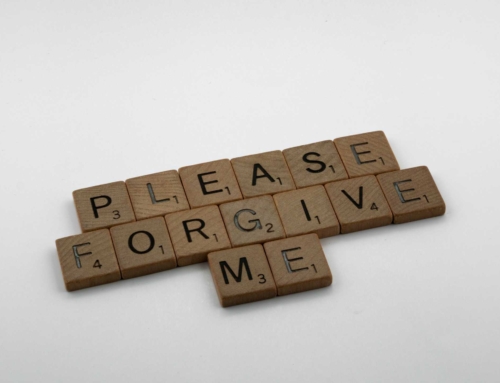Everyone desires connection. Everyone wants to be valued and loved and made to feel useful. So, it isn’t any great wonder that all healthy relationships have an aspect of give and take, of sacrifice and gain, and of care and receipt of care.
 When you love another person, you naturally want to meet their needs and have yours met in return. But what happens when this healthy idea of interdependence with others gets distorted? At what point does a relationship turn from healthy mutual reliance to unhealthy codependent behavior?
When you love another person, you naturally want to meet their needs and have yours met in return. But what happens when this healthy idea of interdependence with others gets distorted? At what point does a relationship turn from healthy mutual reliance to unhealthy codependent behavior?
While there isn’t an exact answer to the questions above, there are some clear factors that differentiate codependent relational patterns from healthy ones. This article will define codependence, identify some signs of a codependent personality, and offer some suggestions for how people involved in codependent relationships can get help.
If you believe you or a loved one exhibits signs of codependent attachment tendencies, don’t hesitate to reach out to a mental health professional for support and guidance.
What is codependence?
The term codependence was once linked only to relationships involving at least one person who struggled with addiction. Over time, however, the definition of a codependent relationship has expanded to include any relationship where two people become so reliant on one another and the relationship that they are unable to function without the other person. This can be a parent/child relationship, a romantic relationship, a sibling relationship, a friendship, or any other type of close relationship.
The primary difference between a healthy interdependence and codependence is the way a codependent person’s mood, happiness, and identity are all externally defined by the relationship. This ultimately leads to an imbalanced relational pattern and allows relationships to become one-sided with one person’s needs always taking priority over another’s.
It is believed that these deep-rooted patterns of how someone relates to others are established in childhood, possibly due to seeing a codependent relationship modeled in the home.
When a person with codependent tendencies is in a relationship with another person, they tend to sacrifice everything they want and need, even their own identity, to please the other person and meet their needs. There is an innate overreliance on the relationship. The relationship becomes codependent when the other person begins to take advantage of this compulsive sacrifice, either intentionally or unintentionally, and the cycle of imbalanced care-taking is established.
Examples of codependent behavior and beliefs
It is common in codependent relationships for one participant to take on the role of caretaker, and the other to take on the role of the dependent. While these may seem like two separate patterns of unhealthy behavior, codependent behaviors are extremely symbiotic. Both members of the relationship often hold some of the following beliefs or display some of these behaviors.
Believing you are responsible to rescue, care for, or change the other person.
The caretaker in the relationship has a compulsive need to protect the other person from themselves and any negative consequences of their behavior. You may also feel the need to control or change the other person in order to help improve their life. Often you aren’t able to recognize that the other person’s choices and actions are outside of your control.
Believing it is selfish for you to care for your own needs.
Someone in the caretaker role of a codependent relationship will often feel that their needs are less important than the other person’s needs. You may experience feelings of guilt when you take time away for self-care. You may also prioritize the other person’s feelings above your own even when the other person has hurt you.
Unable to set or maintain healthy boundaries around time, energy, space, or comfort.
People with codependent tendencies often give or take more than their fair share. It may be difficult for you to find any time or space for yourself in your life. Negative behaviors may escalate when either one of you attempts to set healthy boundaries.
Relying on other people’s opinions to determine your self-worth.
Those with strong people-pleasing impulses tend to be more prone to codependent behaviors. You likely value outside approval from other people more than you value yourself. You may seek approval and recognition from others so much that you adapt your whole self to please them, making it difficult for you to really “be yourself.”
Lacking a clear sense of yourself.
 When someone is in the middle of a codependent attachment, their sense of self can become entirely enmeshed with the other person’s identity. You may not know what you really like or who you really are. You may feel that you have “lost yourself” within the relationship. It may also become difficult for you to identify or describe your own feelings.
When someone is in the middle of a codependent attachment, their sense of self can become entirely enmeshed with the other person’s identity. You may not know what you really like or who you really are. You may feel that you have “lost yourself” within the relationship. It may also become difficult for you to identify or describe your own feelings.
Having no other significant relationships in your life.
A person who is involved in any type of codependent relationship often does not have the time, energy, or apparent need for other relationships. Codependence tends to mean that you are wholly reliant on one person to fulfill all your emotional needs. This becomes more problematic if you begin to feel trapped in the codependent relationship because you may have already allowed your outside support system to crumble.
Other signs of co-dependence include:
- Intense fear of abandonment
- Extreme dependency
- Poor ability to communicate within the relationship or about the relationship
- Difficulty making decisions
Tips for changing unhealthy relational patterns
Work on becoming your own #1 fan.
Until you learn to value yourself, you won’t be able to recognize when other people aren’t valuing you. Take some time to remember the things you loved about yourself in the past or to visualize a version of yourself that will make you feel proud. What can you start doing today to nurture your own favorite parts of yourself?
Turn your focus inward.
Though people in codependent relationships can often forget this, the only person you have the power to control or to change is yourself. The next time you find yourself thinking about the ways someone else should change, grow, do more for you, or meet your needs better, try turning the attention back on yourself.
Ask why you feel responsible for this person’s behavior, or why you feel they owe you more than you’re getting. Becoming aware of your own thoughts, emotions, and triggers can be a great first step toward changing the dynamics of your relationships.
Carve out some time and space for yourself.
 This will require you to value your mental, emotional, and physical health enough to set some boundaries in your relationships. It is healthy for there to be times when you are not available to meet anyone else’s needs. It is reasonable to set limits on how much you are able and willing to give of yourself to others. When you start to make room for yourself in your life, you are better able to respond to others from a place of generosity rather than obligation.
This will require you to value your mental, emotional, and physical health enough to set some boundaries in your relationships. It is healthy for there to be times when you are not available to meet anyone else’s needs. It is reasonable to set limits on how much you are able and willing to give of yourself to others. When you start to make room for yourself in your life, you are better able to respond to others from a place of generosity rather than obligation.
Whether you are now or have ever been involved in a codependent relationship, you probably know how difficult it can be to change an unhealthy relationship dynamic once it has been established. Don’t wait to reach out to family, friends, or a counselor for support.
You may not have the words to make others understand what you are going through right away, but the more you open up about your relationship and yourself, the easier it will be for you to ask for the help that you need. Recognizing your own codependent behavior is a great first step toward changing the way you relate to others for the rest of your life.
Counseling for codependent behavior
Speaking to a counselor or other mental health professional about your concerns regarding codependent behavior is always a great place to begin. If possible, try journaling a bit about the feelings, beliefs, and behaviors you see in yourself that are causing you the most concern.
It can be difficult for people in the middle of codependent relationships to speak or think clearly about the relationship, so bringing this journal entry to a meeting with your counselor or therapist can be a great tool to help you find your voice.
Treatment for people displaying codependent behavior tends to focus on digging down to the “why” behind the behavior. The goal is to identify the reasons these unhealthy attachment patterns started to develop in the first place and to increase understanding of how one’s personal history impacts their current behavior, beliefs, and relationships.
Counselors may also help their clients learn how to set healthy boundaries, develop healthier self-esteem, and discover how to express their emotions more fully. This can be done through one-on-one sessions, couples therapy, group therapy sessions, or a combination of these. Reach out to us today to learn what kind of therapy will be most effective for you.
“Distant Waterfall”, Courtesy of Thomas Kelley, Unsplash.com, CC0 License; “Sunflower”, Courtesy of Aaron Burden, Unsplash.com, CC0 License; “Eucalyptus”, Courtesy of Annie Spratt, Unsplash.com, CC0 License; “Germany”, Courtesy of Simon Migaj, Unsplash.com, CC0 License










